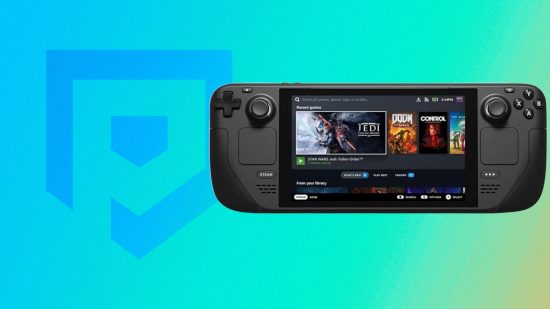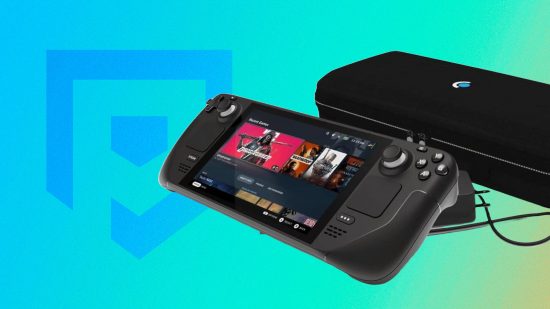If you’re even considering picking up a Steam Deck, you’re probably moderately serious about gaming. You want to be able to take your extensive Steam library on the go with you, or maybe you just even want to be able to play horizontally from bed. No judgment here. But if you’re serious about gaming, you’ll also want to know all the precise details about the Steam Deck specs. How do these specifications match up against other handheld competitors or even a gaming PC? We’re here to break it all down for you, so that you’re in the best place to make informed decisions about what’s best for your setup.
For more Steam Deck guides, take a look at our picks for the best Steam Deck docks you can buy right now, as well as our list of the best Steam Deck games. Or see our article comparing the Nintendo Switch vs Steam Deck, and our expectations for the Steam Deck 2.
What is the Steam Deck’s processing power?
Integral to the Steam Deck’s performance is a custom quad-core AMD Zen 2 APU paired with an AMD RDNA 2 GPU, delivering a balanced mix of performance and power efficiency. Backed by 16GB of LPDDR5 RAM, this ensures responsiveness during gameplay and overall smoothness.
What is the Steam Deck’s display?
The Steam Deck comes in two versions: OLED and LCD. Both feature a 1280 x 800 pixel resolution, offering clear visuals. The OLED variant boasts a 7.4-inch screen and supports a refresh rate of up to 90Hz, while the slightly smaller 7-inch LCD model runs at 60Hz.

What are the Steam Deck’s storage options?
The Steam Deck offers storage options ranging from 256GB to 1TB NVMe SSDs. While the base 64GB eMMC model is being phased out, you can easily expand storage using microSD cards without needing to open the device.
What is the Steam Deck’s operating system and compatibility?
Running on SteamOS 3.0, the Steam Deck integrates perfectly with Steam’s library. Powered by the Proton compatibility layer, it ensures optimized performance for supported titles through the Deck Verified system, which will provide you with the best gameplay experience. However, you can still run games that aren’t necessarily Deck Verified, albeit with lower expectations for performance and smoothness.
What are the Steam Deck’s dimensions and weight?
Measuring at 298mm x 117mm x 49mm, the Steam Deck strikes a balance between portability and performance. The OLED model weighs 640g, while the LCD model weighs slightly more at 669g. Both provide a compact, portable, and powerful gaming experience.
What are the Steam Deck’s connectivity and ports?
Equipped with USB, HDMI, DisplayPort, and microSD card slots, the Steam Deck offers versatile connectivity options for peripherals and external displays. With Wi-Fi and Bluetooth support, you can also connect for online gaming and multimedia streaming.
What is the Steam Deck’s battery life and performance?
Featuring a 40WHr battery, the Steam Deck offers two to eight hours of gameplay depending on usage. When docked, it supports video output up to 4K 120Hz or 8K 60Hz, letting you play your favorite games on any screen no matter the size.
Where can you buy a Steam Deck?
If reading about the Steam Deck specs has convinced you that it’s the right option for all your handheld gaming needs, you can purchase an official Valve Steam Deck from Amazon using the link above. Or, you can buy the product directly from Valve through the Steam store.
For more hardware options, see our guide to the Steam Deck vs Asus ROG Ally. Or, check out our picks for the best Nintendo Switch games you can play right now, before getting into the speculative mood with our thoughts on what to expect from the new Pokémon game.

